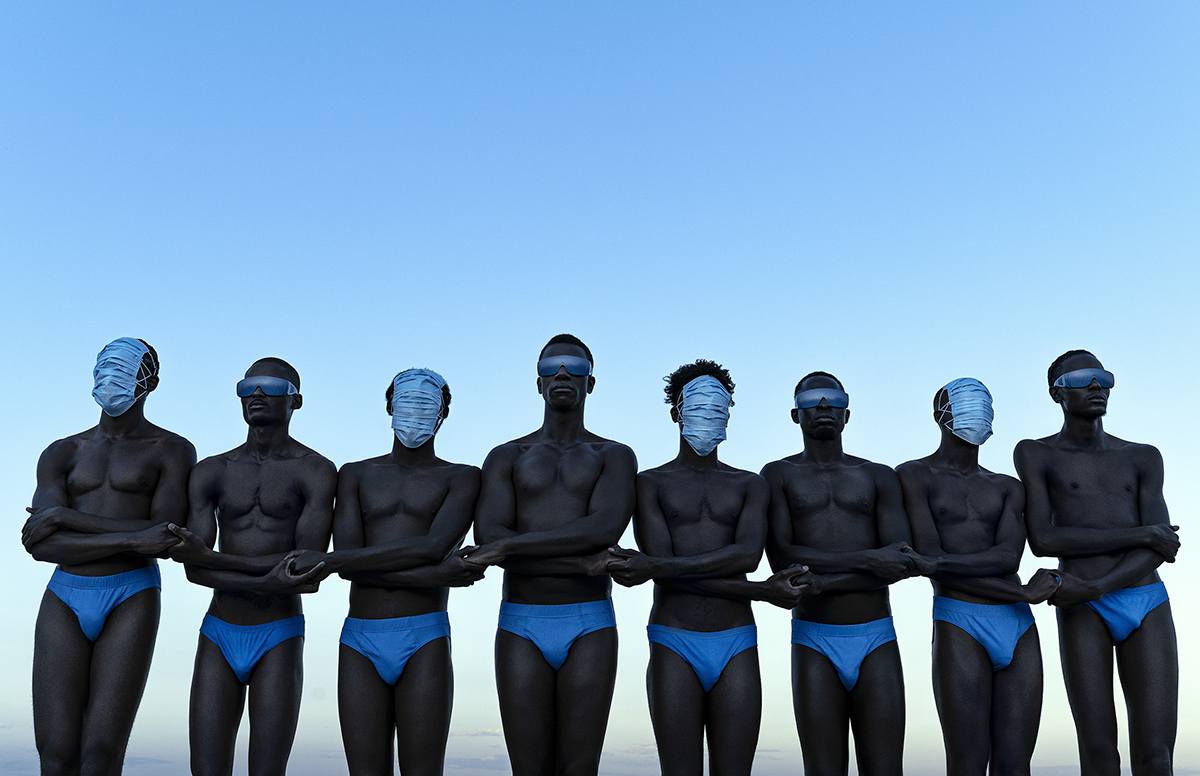INTERVIEW
Reclaiming the African Narrative
WITH TATENDA CHIDORA
An interview with Tatenda Chidora
“With the times changing, Africans have been empowered to control the narrative… Without any disregard for the reality, I believe we still have a better story to tell beyond all of our problems as Africans.”
Tatenda Chidora won our Colors competition with an imaginative and provocative image that subverts the narrative of the Covid-19 pandemic into something hopeful, and that judge Murray Fredericks praised for its “comment on the universal human experience of this moment in an original way”. Keen to know more about the image, the series from which it was taken, and Tatenda’s approach, we put some questions to him. His answers — touching on how his ideas are translated into reality, what the future of the exhibition space looks like, and why he champions Africanism, focusing on the celebration of black skin and contemporary masculinity — were engaging and insightful. We invite you into his world…
Dear Tatenda, congratulations on winning our Colors competition. What did you make of judge Murray Fredericks’ comments?
Thank you, for your consideration. I am truly honored to have been awarded this prize. Murray picked up on the premeditation that I had when I was creating the body of work. I was always drawn to masks from TV medical series, and during the pandemic I realized that the hospital was amongst us. We become moving hospitals by wearing masks which also acts as a form of isolation from one another.
I understand that the image is from your series If Covid Was a Color. Can you tell us a little bit more about the image and series, and the story you wanted to tell with them?
“If Covid was a Color” Is a body of work that I started working on in August 2020, during the pandemic. I was in a space where I was personally frustrated because of the uncertainty of the time and a lack of work coming through. I realized that there where many forms of visual stories of the pandemic that were translating the time, but that they were mostly from a documentary or photojournalistic perspective. This presented to the viewer a harsh reality of the time, emphasizing the pain, isolation and despair. I then decided to approach the series with these elements but from a desire of wanting the viewer to gain a sense of courage and hope after encountering the body of work. As visual storytellers we have a responsibility to translate the current times. The pandemic was really devastating but in remembrance of the time I would love for my work to be considered. I experimented with PPE material which I crafted as my props and elements of design in the images.
The creativity on display in this work is wonderful – sculpting surgical masks, gloves and sheeting into new, poetic forms that your models interact with. What was the creative process like? Was there some spontaneity on set, or was everything pre-planned in your mind?
The process was pre-meditated before executing. Coming from a background where I am exposed to fashion and the love for fashion, it allowed me to experiment. I would draw up sketches of the images that I had visualized. This would be followed by making the props and costumes. I would then make the props, with help from friends that had stitching experience but also with staple guns and cable ties. There was a lot of pre-planning well before the shoot with a conscious consideration of the regulatory terms that we used every day such as social distancing, mask-wearing and self-isolation.
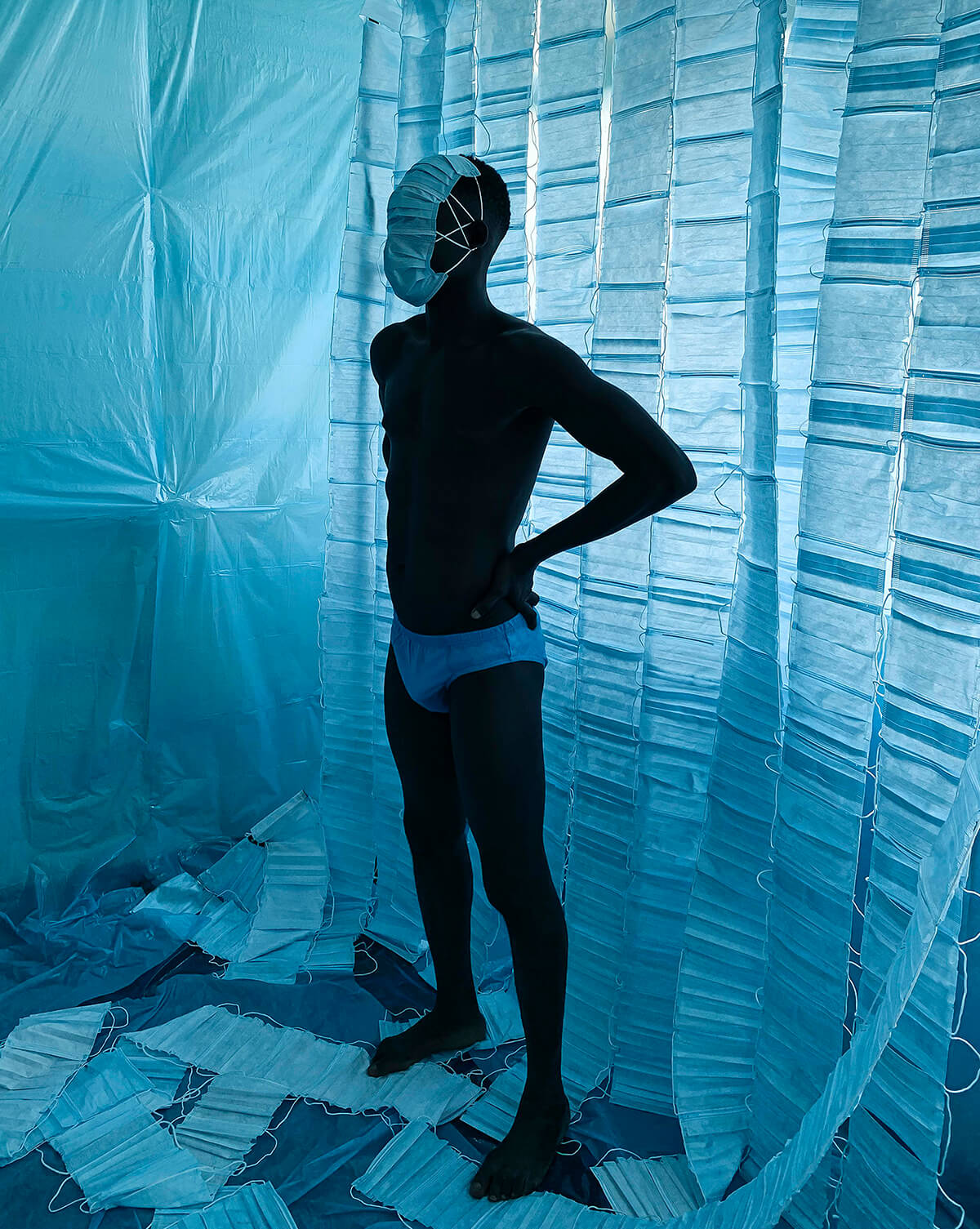
SELF ISOLATION I – TATENDA’S WINNING IMAGE FOR COLORS
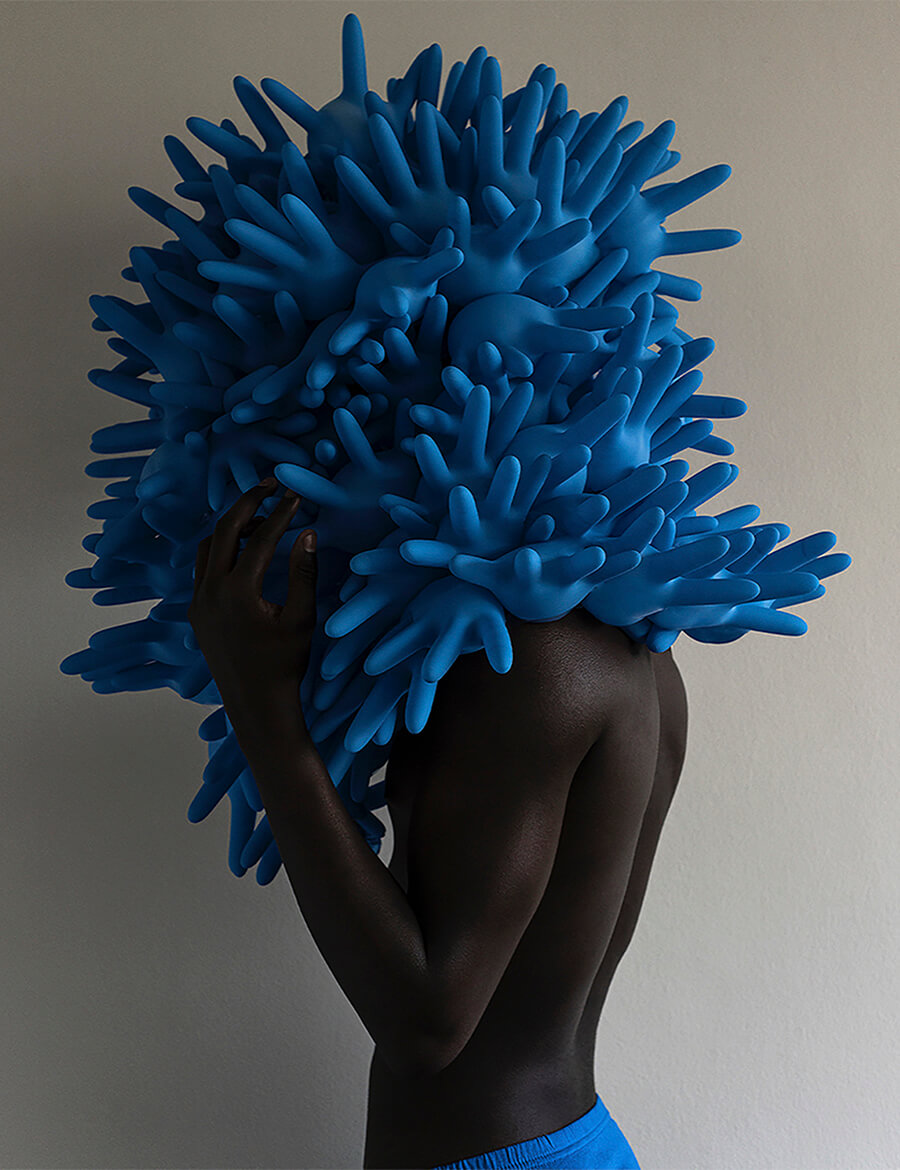
IF COVID WAS A COLOR
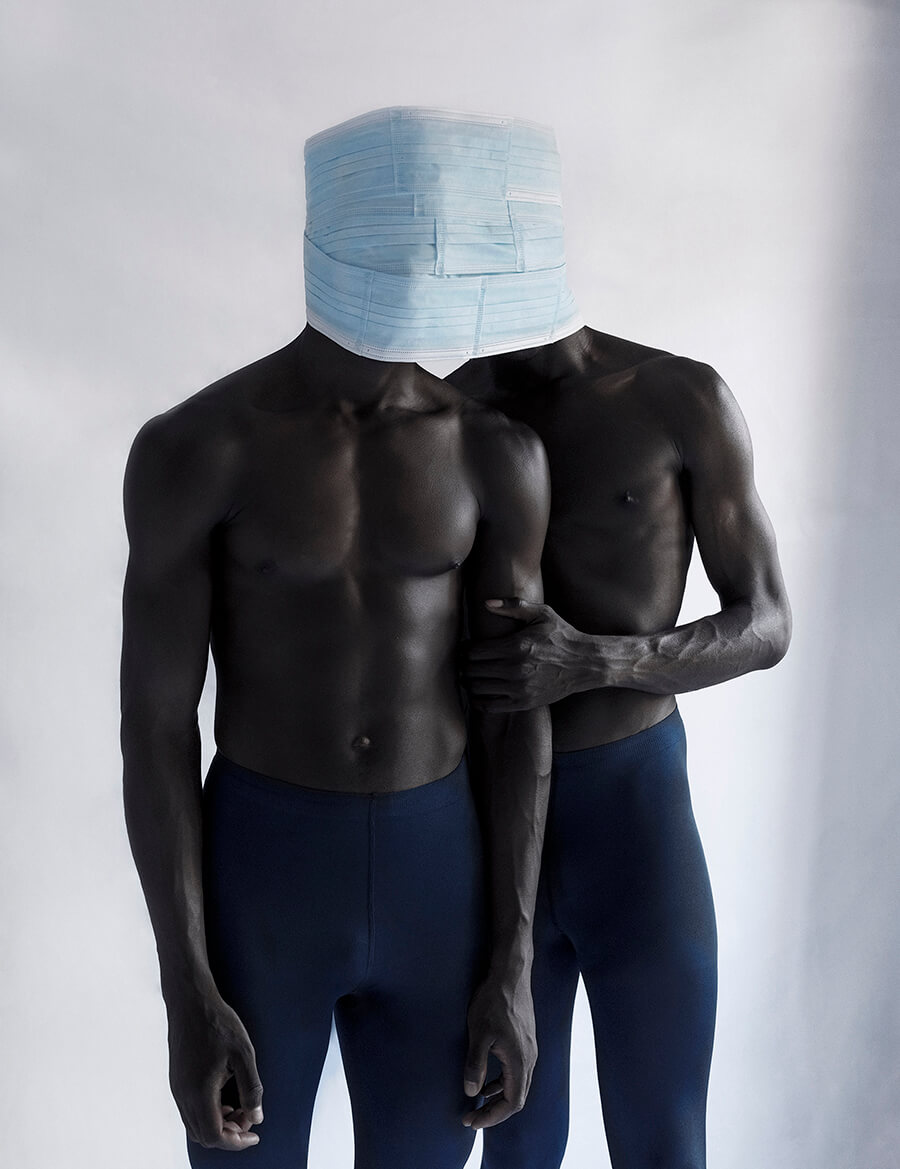
MASK CONVERSATION III
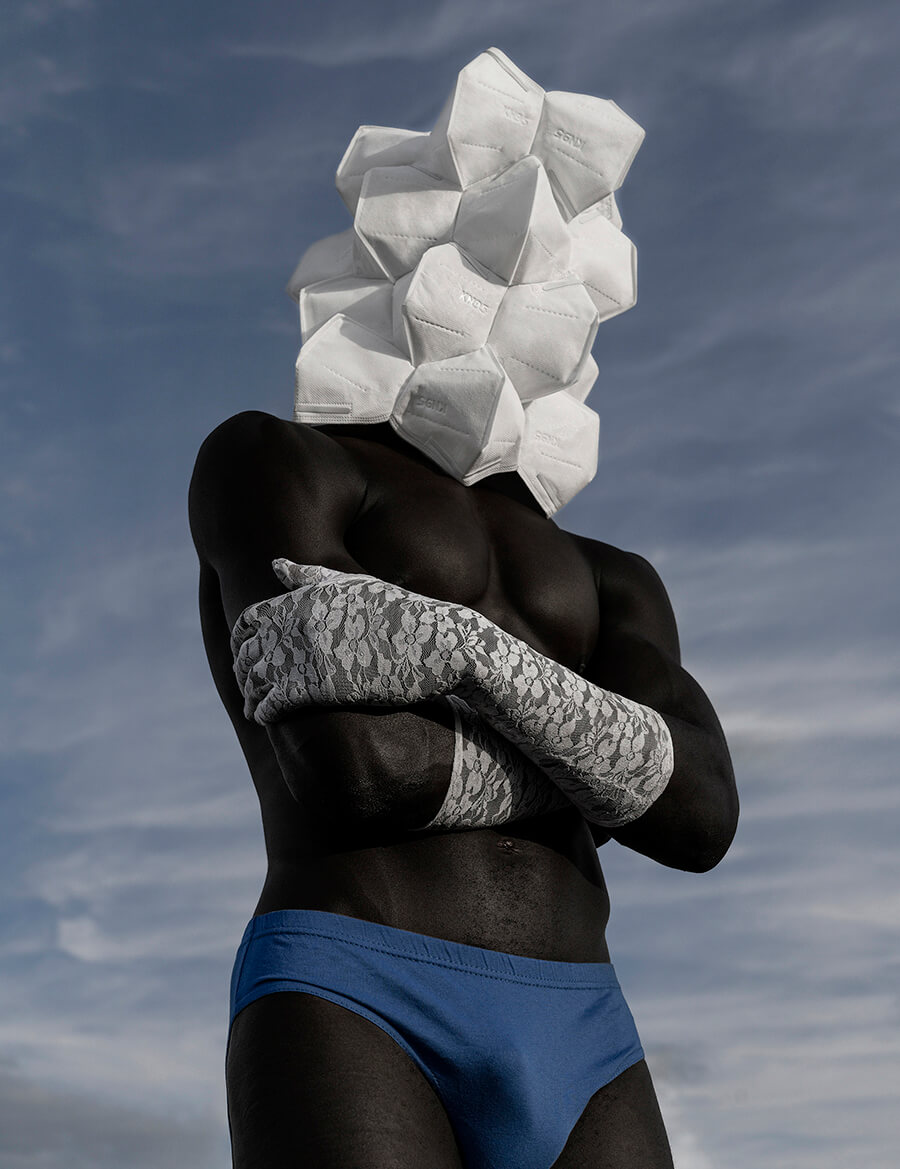
MASK CONVERSATION II
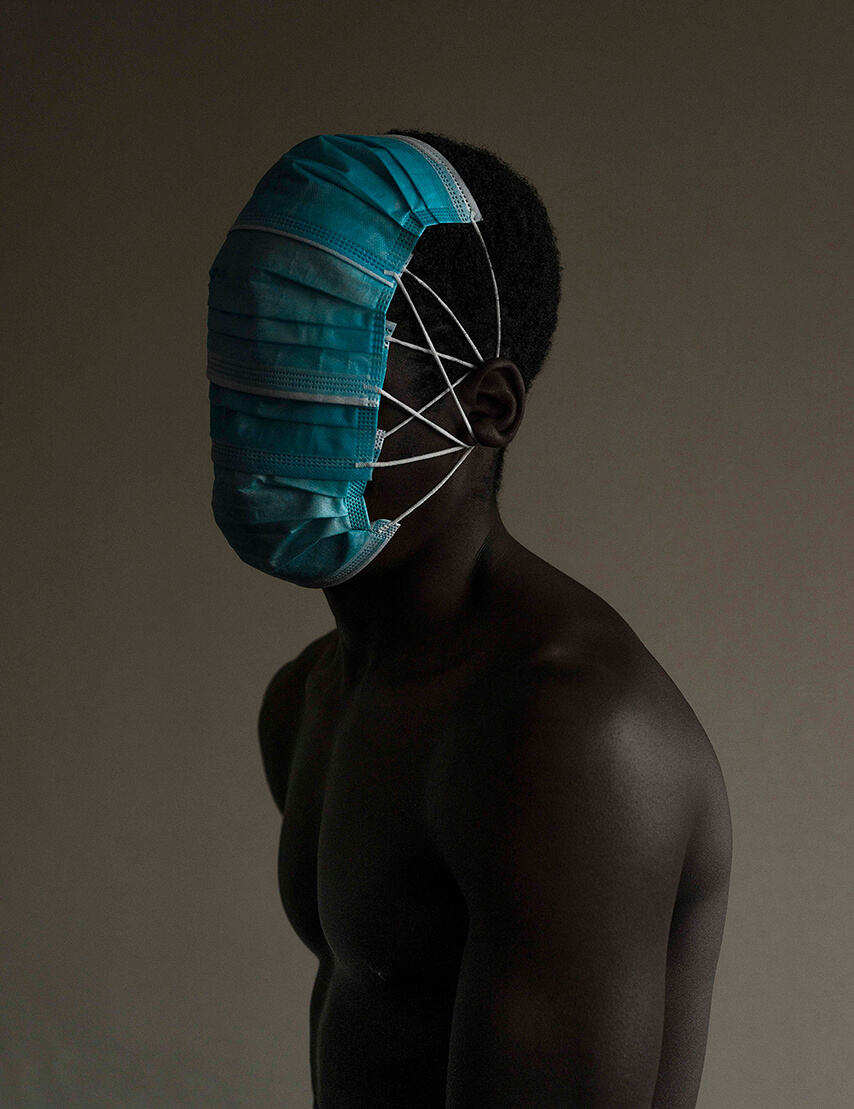
MASK CONVERSATION I
You recently exhibited the series at BKhz Gallery in Johannesburg, and included a number of sculptural pieces alongside the images themselves. I love this immersive approach, along with creating a 3D tour so that viewers all over the world can enjoy the work in-situ. How important is this experimental approach to you, pushing the boundaries of what a traditional photography exhibition is? And what next?
I am forever grateful to the BKhz team. They managed to be super innovative during this time. They had started with 3D tours just before the pandemic but principally as an archival tool of the shows that they had. During the hard lockdown when galleries were considered as non-essential this then allowed them to curate shows on a 3D platform. With the momentum that the series has gained since, many people continue to ask where they can view the work. Directing them to the 3D tour comes in handy and this allows the work to have no boundaries. Almost anyone can view the body of work. I would love for the show to travel to allow more people to experience it in person.
Do you have a favorite shot from the series? Why that one?
Self Isolation II – The man standing above the water. Some of the viewers say it evokes god rising out of the water. I remember sketching this image. My notes included ideas such as ‘larger than life’, ‘a lot of masks’ and ‘standing tall’. The model is standing on a ladder and he has a garment that is 4 meters long made out of 276 masks stitched onto fabric. This shot is my favorite because it celebrates the resilience of humankind through the pandemic. We might not have fully considered how strong we have been in adapting to the new times and just finding a way through but we managed to stand above it all.
Tell us a little about yourself, and your route into photography…
I was born and bred in Zimbabwe, but I have been living in South Africa for the past 14 years. I am a commercially trained photographer. I have always been drawn to fine art photography which I practice in my personal work. Originally I had a dream of being a culinary chef, but I walked away from that dream after I bought my first camera. The eagerness of wanting to create images that I see in magazines drove me to learn more techniques in photography. I went on to study Photography at the Tshwane University of Technology.
And how would describe your photographic style and approach?
My work has mostly male figures as the subjects – something I have consciously made a direction to explore. It’s my personal contribution to the topic we ought to unpack about masculinity. At large my photographic style stands to celebrate the black community. I render my skin tones to be darker than normal which is an embracement of coming to terms with myself in celebrating whom I am as a black male.
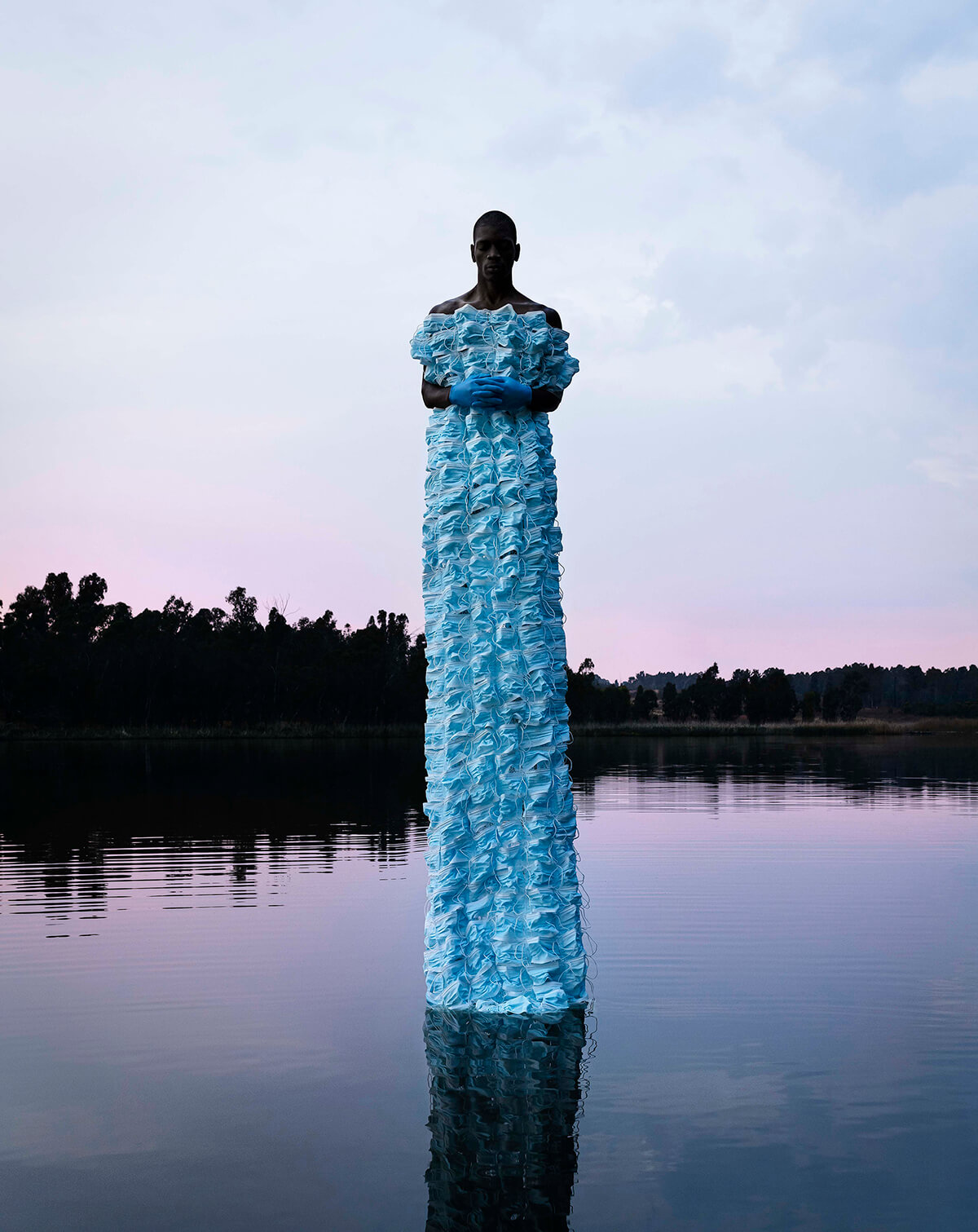
SELF ISOLATION II
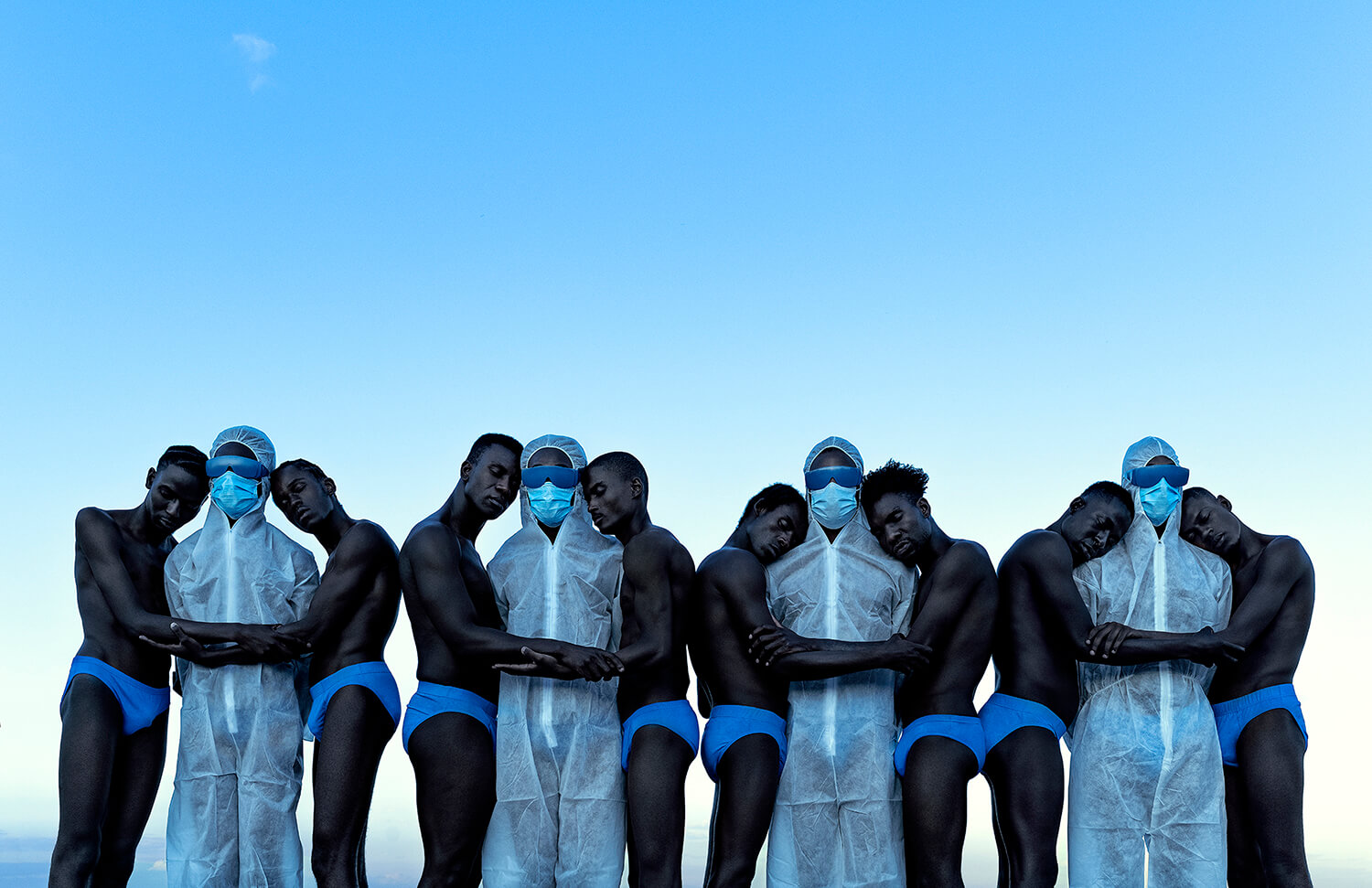
SOCIAL DISTANCE II
As a Zimbabwean working in South Africa, you’ve been hailed as a champion of Africanism and ‘new African photography’. What does that phrase mean to you? Is it something your conscious of when you make your work?
The world has transformed. There is an empowerment that has come through technology and social media. As an African visual artist, this has liberated me by giving me a platform to be able to make an account of our everyday experiences first-hand to the world. African stories have been told by people who would come and experience them for a short time and restrictedly translate our culture and stories. With the times changing, Africans have been empowered to control the narrative. With these tools, I hope to bring into account our daily stories and experiences in a different aesthetic. New African Photography for me is the different narrative that separates the modern from the image of Africa then. The kid with the teardrop, poverty, and a dying Africa. Without any disregard for the reality, I believe we still have a better story to tell beyond all of our problems as Africans.
And how is the photography scene in Johannesburg? What about back home in Zimbabwe?
South Africa is very diverse and simply beautiful. They have been very open to art and have a different element of freedom in comparison to any other African country. There is freedom of movement and expression. You can experiment and people give space to listen to you. Zimbabwe is very different; I still have to argue my case as to why I am a photographer. Photography falls under journalism and weddings. My style of photography would poke a nerve. There is a way men are perceived and that’s it.
Do you have a dream project?
A dream project would be executing all the ideas that I have in my mind. A color study in Africa would be one thing that resonates in my spirit and many other projects in my bucket list.
And finally, is there a single piece of advice you’d pass on to other photographers starting out, or that you wish you could share with your younger self?
There are seven billion people on Earth and we all have different finger prints. That’s a confirmation that we all have at least one thing that we bring to the earth. So take time to meditate on each idea that you get.
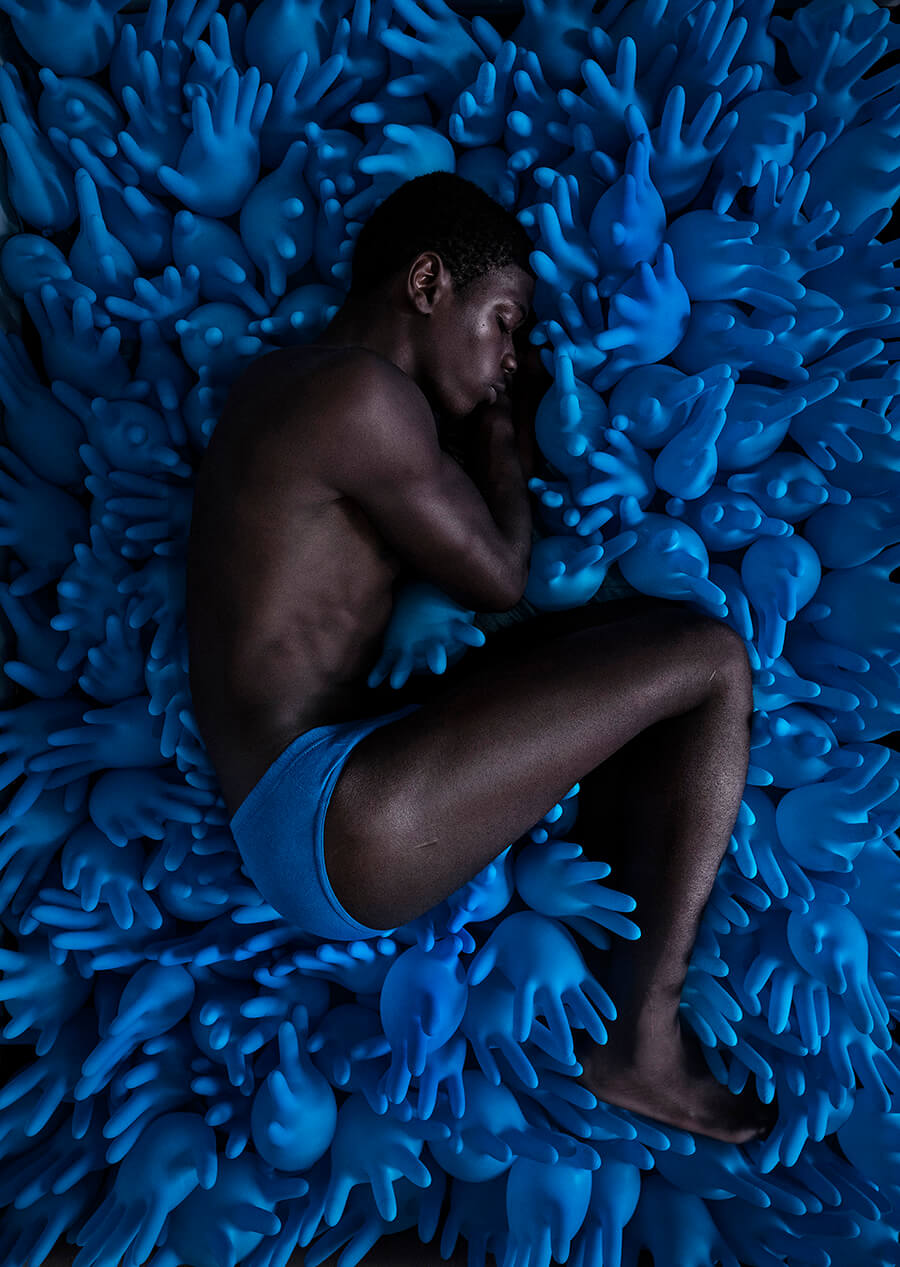
SELF ISOLATION III
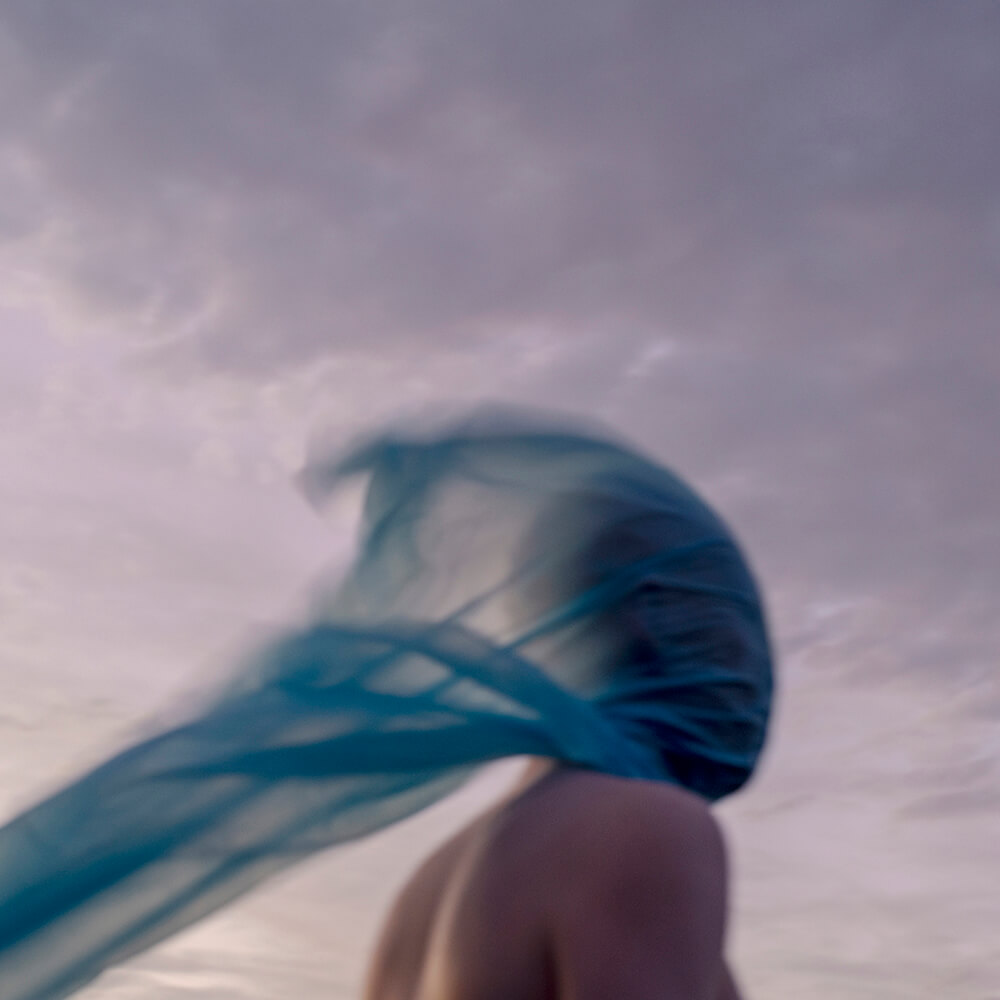
FOURTH WAVE
